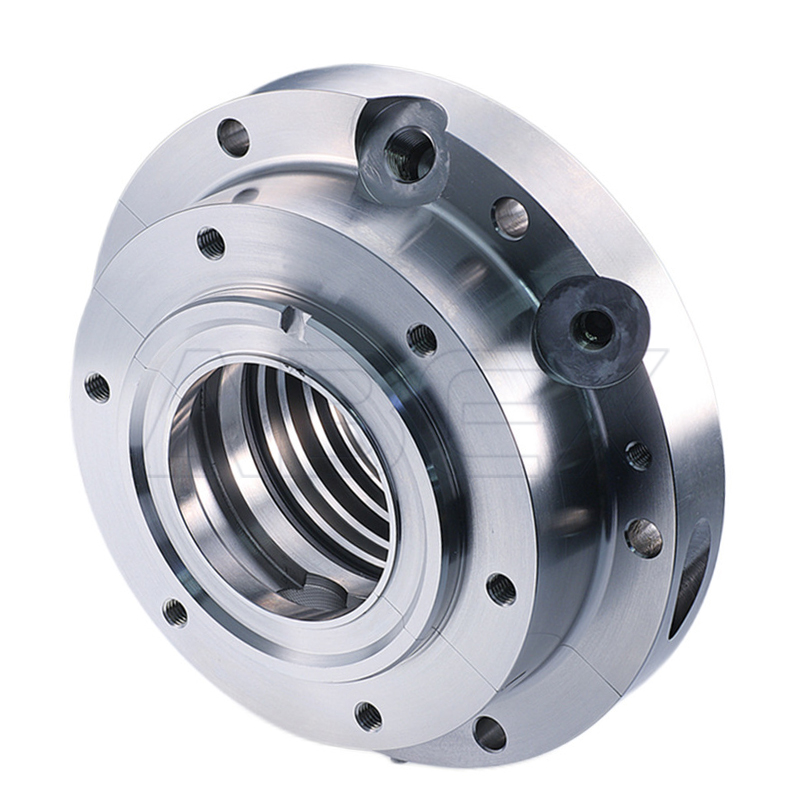Features
- Multi-part seal rings, radially cut on process side, overlapped mortised with gas tight joints on atmosphere side (adjusting)
- Split housing design
- Lowest possible operation gap – lowest leakage
- Dry running
- Self-adjusting seal rings
- Seal rings bear radial shaft movements
- Compensates axial shaft movements
- Short axial installation length
- No sealing components mounted on the shaft and hence no additional shaft vibrations
Advantages
- Easy installation by split housing design (shaft removal not required)
- Long-term operation time
- Maintainability
- Segmented seal rings for easy replacement
Operating range
Shaft diameter:
d = 45 … 340 mm (1.77″ … 13.89″)
Operating pressure: p = vacuum … 3 bar (44 PSI) abs. (depends on peripheral velocity)
Operating temperature: t = -120 °C … +500 °C (-184 °F … +932 °F) for carbon,
-120 °C … +150 °C (-184 °F … +302 °F) for PTFE compound
Sliding velocity:
vg = max. 40 m/s (131 ft/s)
Radial play: ±2.5 … 5.0 mm (±0.1″ … 0.2″)
Axial movement: theoretically unlimited
Recommended wear guard: >58 HRC
Materials
Seal ring: Carbon, PTFE compound
Housing: 1.4021, 1.4571, Hastelloy®, Titanium, Inconel®, others
Tension spring / detent: 1.4571, Hastelloy®, Titanium, Inconel®

